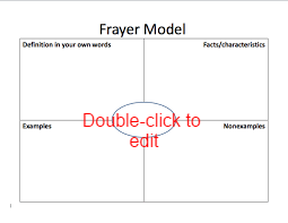Past-ATMOPAV president Sue Negro is a voracious reader, with a 2017 goal to read 50 books. Below, Sue shares some of her favorite math-related reads. Have a favorite to share? Contribute in the comments!
Lewis Carroll In Numberland: His Fantastical Mathematical Logical Life by Robin Wilson is an enjoyable biography of Lewis Carroll exploring his work and life as a mathematician.
Arcadia by Tom Stoppard is a play containing mathematical, scientific, philosophical, and chaos theory themes. Arcadia is considered by critics and people who are supposed to know about this sort of thing to be one of the best contemporary plays.
An Abundance Of Katherines by John Green is a young adult novel with a math-loving protagonist named Colin who wishes to advance himself from the status of prodigy to that of a genius. Colin uses mathematical equations throughout the novel, some of which are explained in the book’s appendix by mathematician Daniel Biss.
The Curious Incident Of The Dog In The Night Time by Mark Haddon is a novel that follows the story of a teenage boy with Asperger Syndrome who loves math and is particularly fond of prime numbers. The book takes the form of a detective novel told in first person by the protagonist Christopher, but his love of math is brought up in many ways throughout The Curious Incident, including via the unconventional chapter numbering.
The Housekeeper and the Professor by Yoko Ogawa. This book follows the story of a mathematician who suffers brain damage after an accident and loses his ability to form memories. He does, however, retain his passionate love for mathematics and equations. The plot is based around his relationship with his housekeeper and with her son, to whom he teaches his love of math
Lewis Carroll In Numberland: His Fantastical Mathematical Logical Life by Robin Wilson is an enjoyable biography of Lewis Carroll exploring his work and life as a mathematician.
Arcadia by Tom Stoppard is a play containing mathematical, scientific, philosophical, and chaos theory themes. Arcadia is considered by critics and people who are supposed to know about this sort of thing to be one of the best contemporary plays.
An Abundance Of Katherines by John Green is a young adult novel with a math-loving protagonist named Colin who wishes to advance himself from the status of prodigy to that of a genius. Colin uses mathematical equations throughout the novel, some of which are explained in the book’s appendix by mathematician Daniel Biss.
The Curious Incident Of The Dog In The Night Time by Mark Haddon is a novel that follows the story of a teenage boy with Asperger Syndrome who loves math and is particularly fond of prime numbers. The book takes the form of a detective novel told in first person by the protagonist Christopher, but his love of math is brought up in many ways throughout The Curious Incident, including via the unconventional chapter numbering.
The Housekeeper and the Professor by Yoko Ogawa. This book follows the story of a mathematician who suffers brain damage after an accident and loses his ability to form memories. He does, however, retain his passionate love for mathematics and equations. The plot is based around his relationship with his housekeeper and with her son, to whom he teaches his love of math


 RSS Feed
RSS Feed